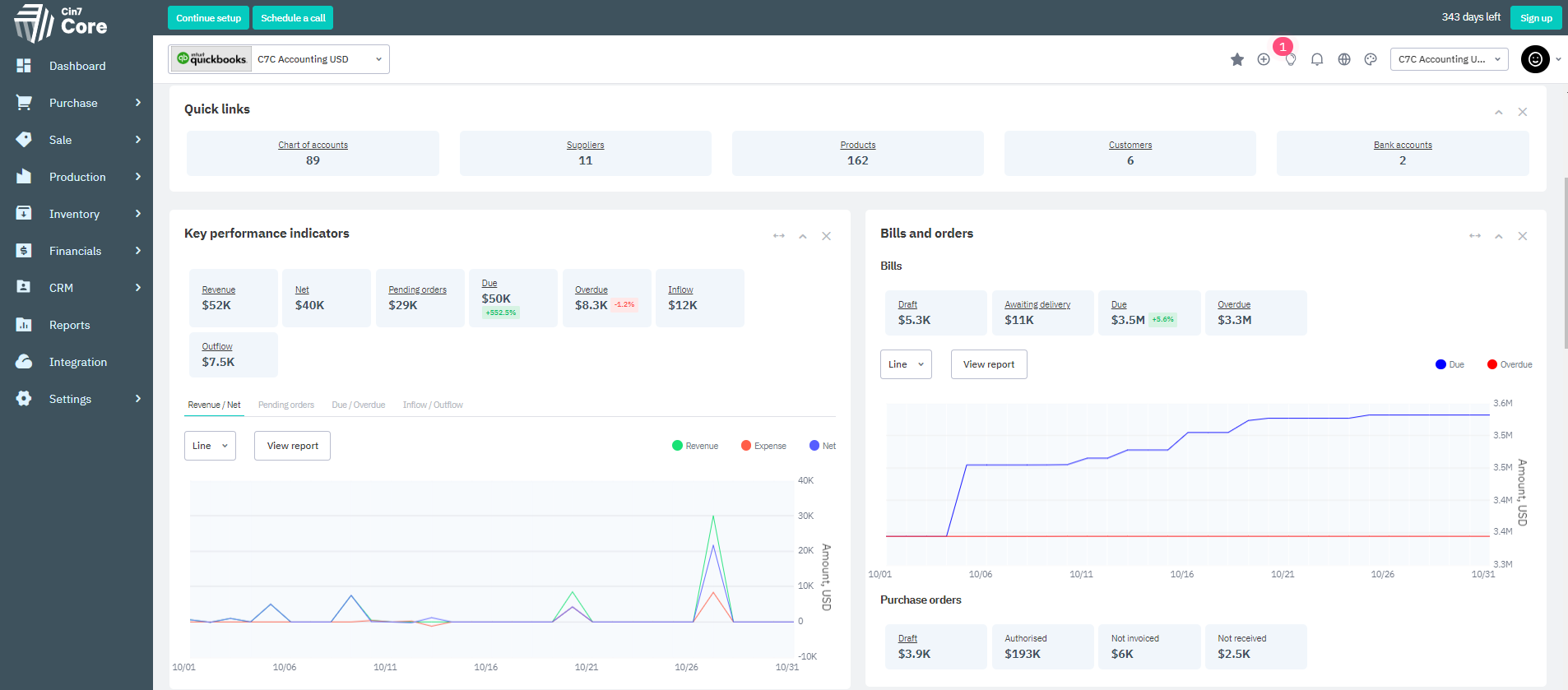
Cin7 Core: Complete Buyer's Guide
AI-enhanced inventory management solution
Cin7 Core positions itself as an AI-enhanced inventory management solution specifically designed for mid-market SMBs with $1M-$5M in annual revenue, differentiating through accessible artificial intelligence capabilities and extensive integration options[47][50].
Market Position & Maturity
Market Standing
Cin7 Core occupies a strategic mid-market position in the inventory management software landscape, targeting businesses with $1M-$5M annual revenue that require AI capabilities without enterprise-level complexity or investment[47][50].
Company Maturity
Company maturity indicators suggest established market presence with documented customer implementations across diverse industries including beauty products, specialty food manufacturing, and fashion retail[53][54].
Strategic Partnerships
Strategic partnerships include integrations with major ecommerce platforms, though specific partnership details require verification beyond advertised connector capabilities[54].
Longevity Assessment
Long-term viability assessment requires consideration of the rapidly evolving AI landscape and increasing competition from both enterprise vendors expanding downmarket and specialized AI solutions.
Proof of Capabilities
Customer Evidence
HairCo achieved quantifiable business transformation through Cin7 Core implementation, realizing a 10% sales boost while reducing goods receiving time by 50% using ForesightAI's predictive analytics[48][53].
Quantified Outcomes
Quantified outcomes from customer implementations provide measurable proof of platform capabilities. Beyond HairCo's 10% sales increase, customers report 50% time reduction in goods receiving processes and elimination of manual tracking across thousands of SKUs[48][53].
Market Validation
Market validation evidence includes successful deployments across diverse industries, from beauty products to specialty food manufacturing to fashion retail[53][54].
Competitive Wins
Competitive wins include customer selection over traditional inventory management solutions, though specific competitive displacement details require verification.
AI Technology
Cin7 Core's AI architecture centers on two primary AI engines: ForesightAI for demand forecasting and Intelligent Document Recognition (IDR) for automated purchase order processing[46][47].
Architecture
Integration architecture represents a core technical differentiator, with 700+ native connectors enabling seamless data flow across ecommerce platforms, marketplaces, and business systems[47][50].
Primary Competitors
Primary competitors include enterprise solutions like SAP Commerce Cloud and Blue Yonder, mid-market alternatives like Zoho Inventory, and specialized AI vendors like Omniful[39][47][50].
Competitive Advantages
Integration Advantage represents the platform's strongest competitive differentiator, with 700+ native connectors substantially exceeding alternatives like Zoho Inventory's 50+ integrations[47][50].
Market Positioning
Cin7 Core positions between basic inventory tools and enterprise platforms, targeting businesses requiring AI capabilities without enterprise complexity.
Win/Loss Scenarios
Win scenarios favor Cin7 Core for businesses requiring omnichannel inventory unification with moderate AI enhancement, particularly those managing 500+ SKUs across multiple sales channels[53][54].
Key Features

Pros & Cons
Use Cases
Integrations
Featured In Articles
Comprehensive analysis of Order Management for Ecommerce for Ecommerce businesses and online retailers. Expert evaluation of features, pricing, and implementation.
How We Researched This Guide
About This Guide: This comprehensive analysis is based on extensive competitive intelligence and real-world implementation data from leading AI vendors. StayModern updates this guide quarterly to reflect market developments and vendor performance changes.
58+ verified sources per analysis including official documentation, customer reviews, analyst reports, and industry publications.
- • Vendor documentation & whitepapers
- • Customer testimonials & case studies
- • Third-party analyst assessments
- • Industry benchmarking reports
Standardized assessment framework across 8 key dimensions for objective comparison.
- • Technology capabilities & architecture
- • Market position & customer evidence
- • Implementation experience & support
- • Pricing value & competitive position
Research is refreshed every 90 days to capture market changes and new vendor capabilities.
- • New product releases & features
- • Market positioning changes
- • Customer feedback integration
- • Competitive landscape shifts
Every claim is source-linked with direct citations to original materials for verification.
- • Clickable citation links
- • Original source attribution
- • Date stamps for currency
- • Quality score validation
Analysis follows systematic research protocols with consistent evaluation frameworks.
- • Standardized assessment criteria
- • Multi-source verification process
- • Consistent evaluation methodology
- • Quality assurance protocols
Buyer-focused analysis with transparent methodology and factual accuracy commitment.
- • Objective comparative analysis
- • Transparent research methodology
- • Factual accuracy commitment
- • Continuous quality improvement
Quality Commitment: If you find any inaccuracies in our analysis on this page, please contact us at research@staymodern.ai. We're committed to maintaining the highest standards of research integrity and will investigate and correct any issues promptly.